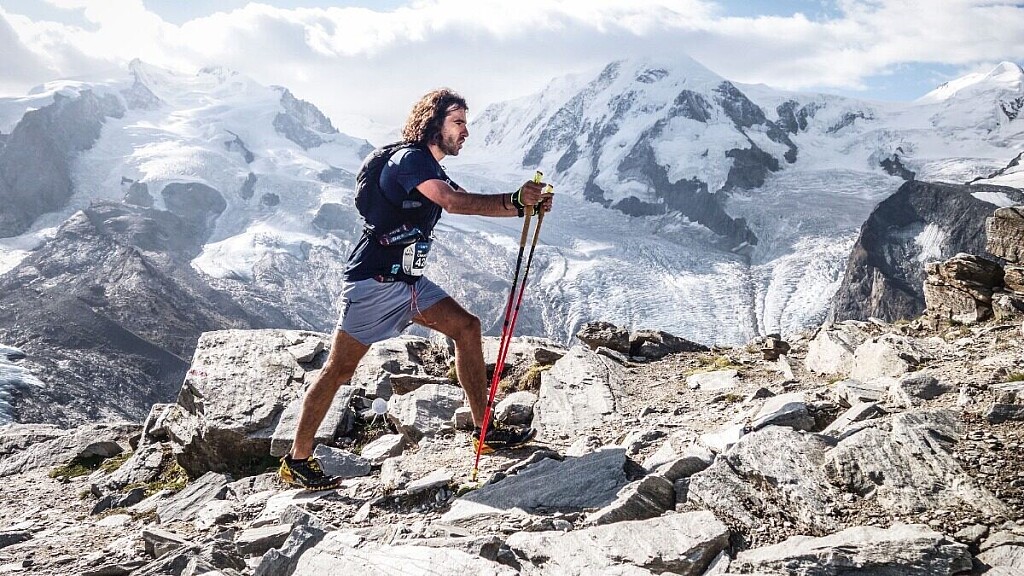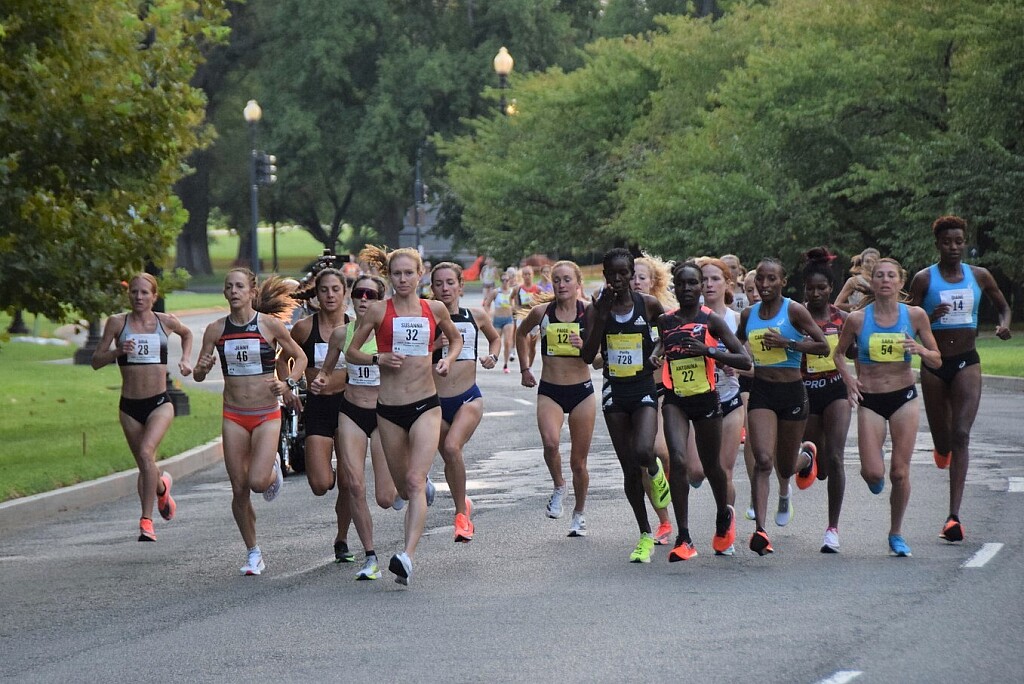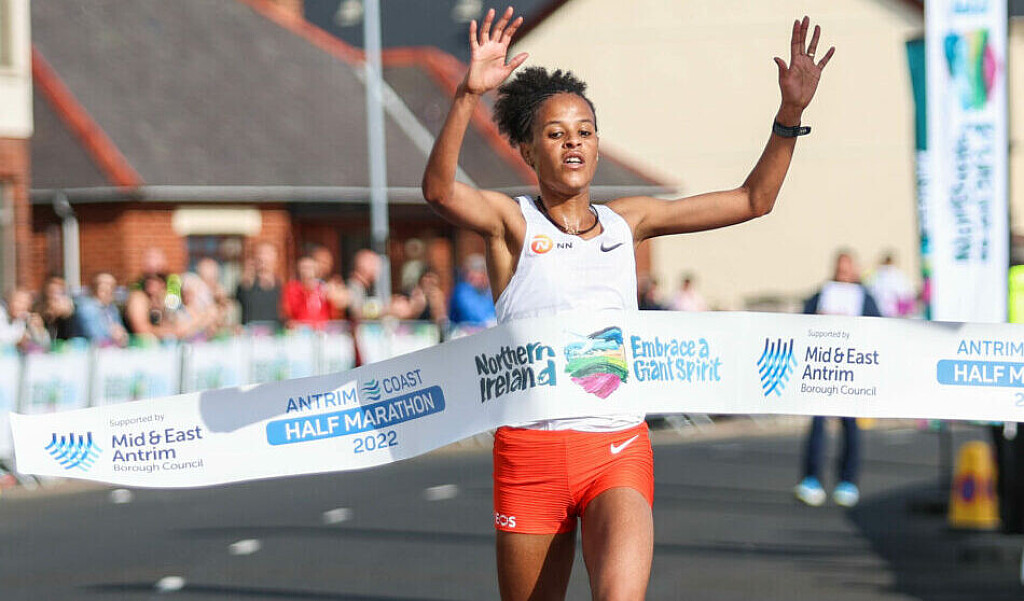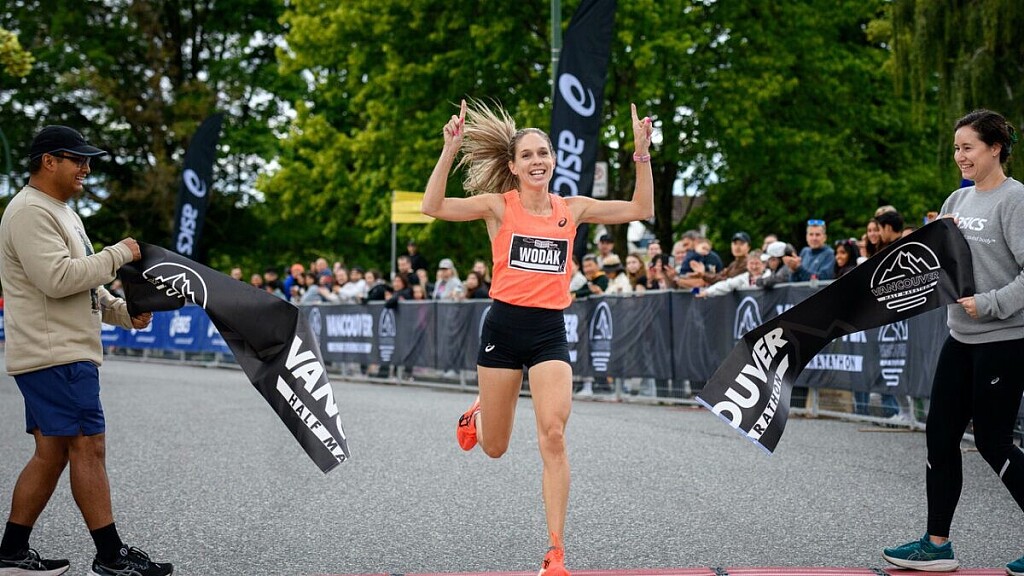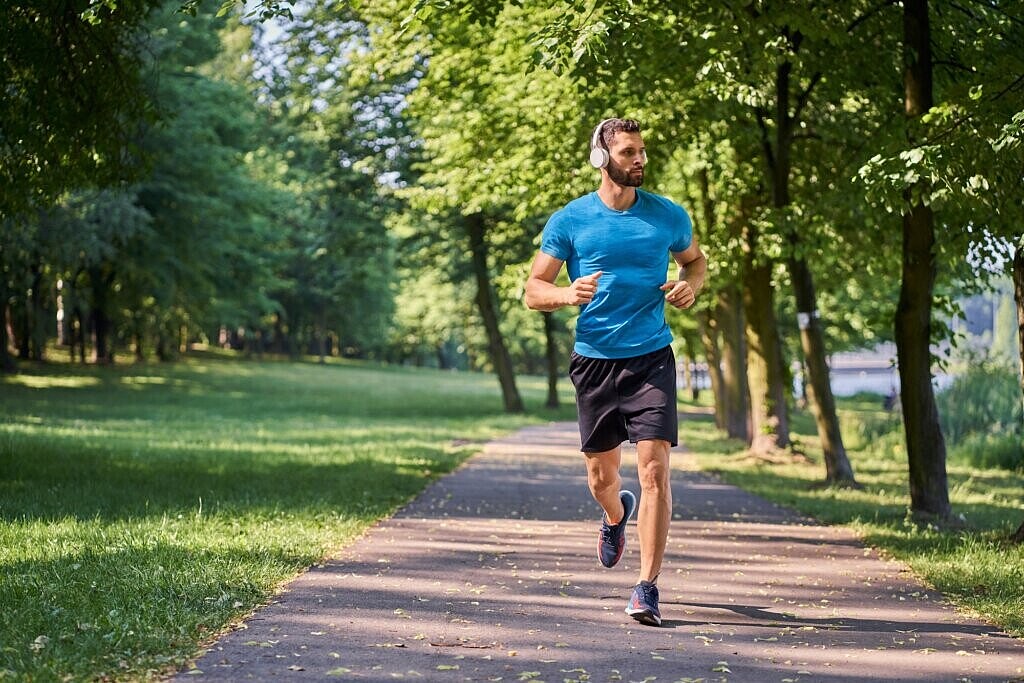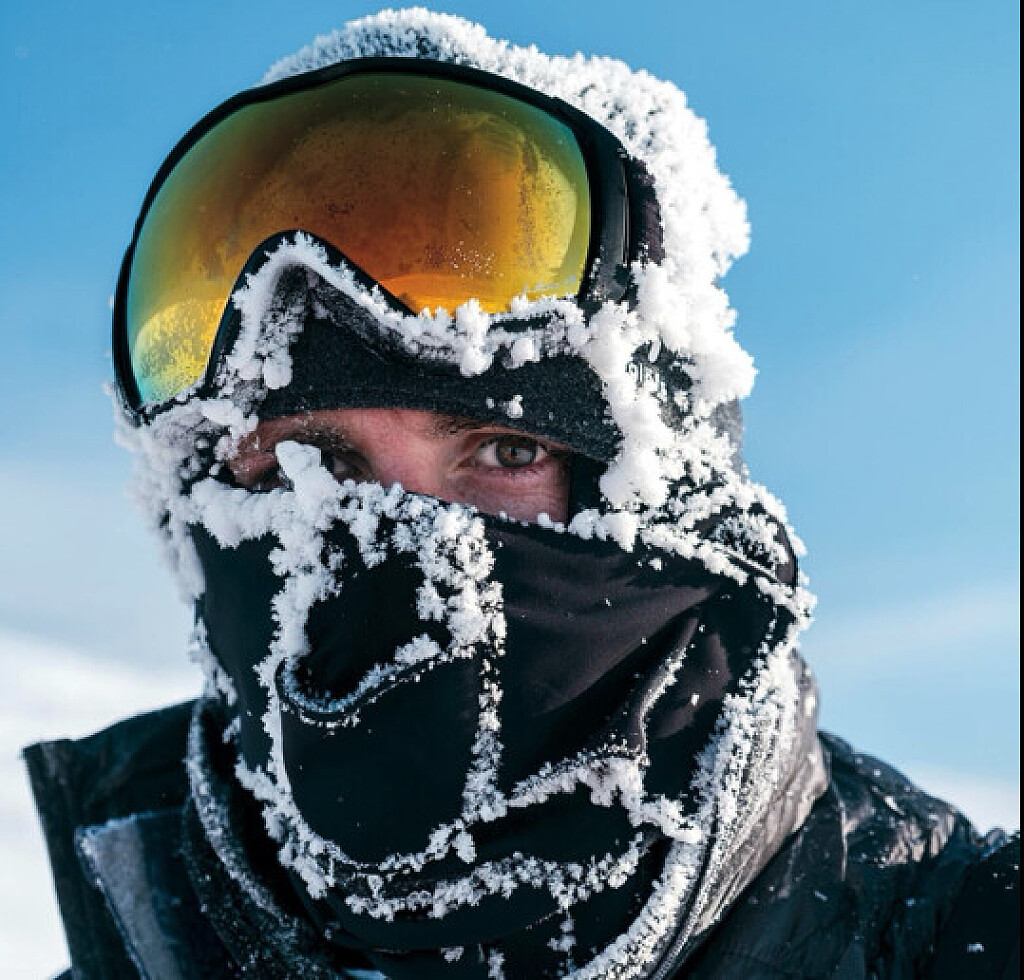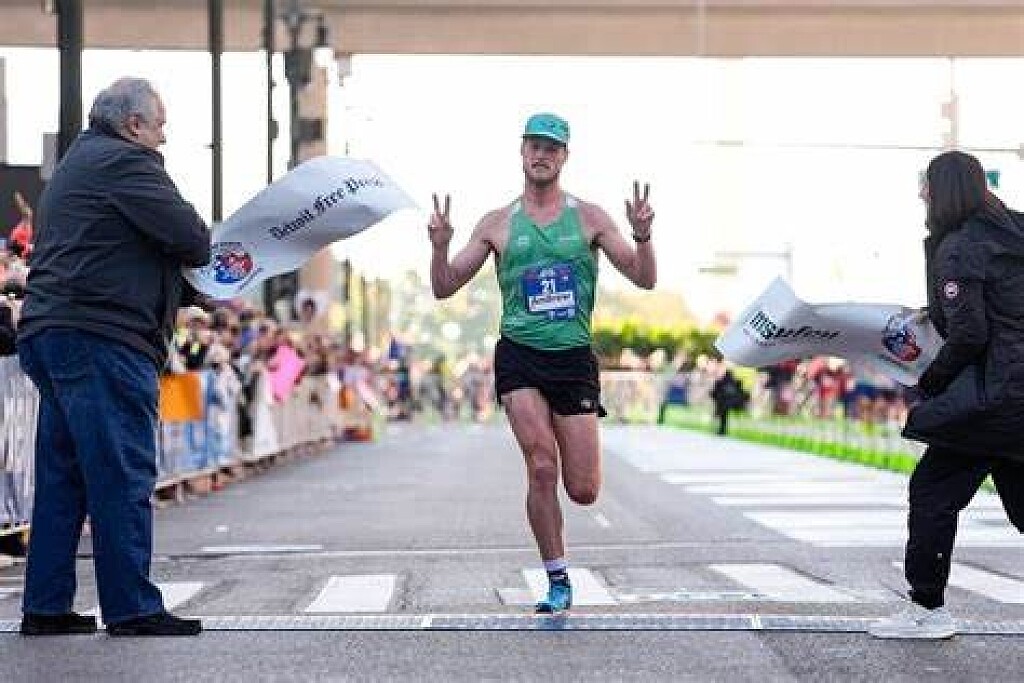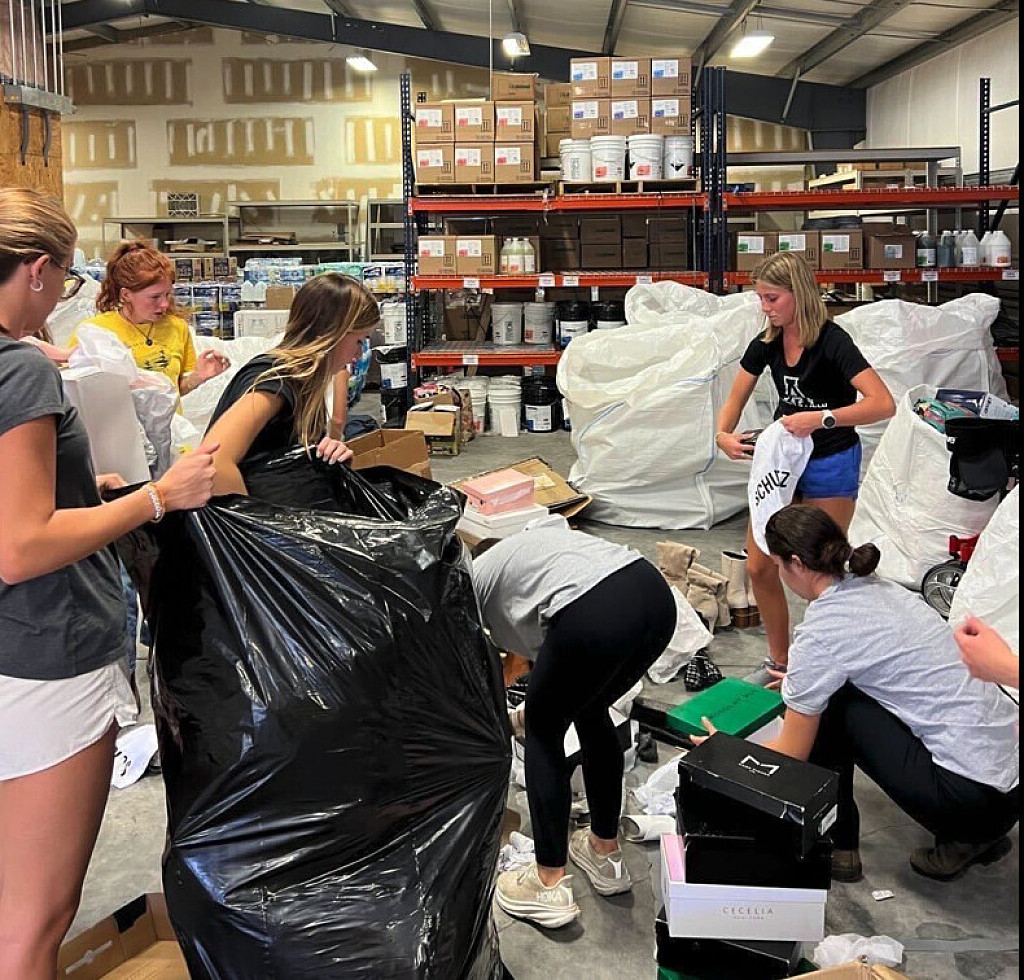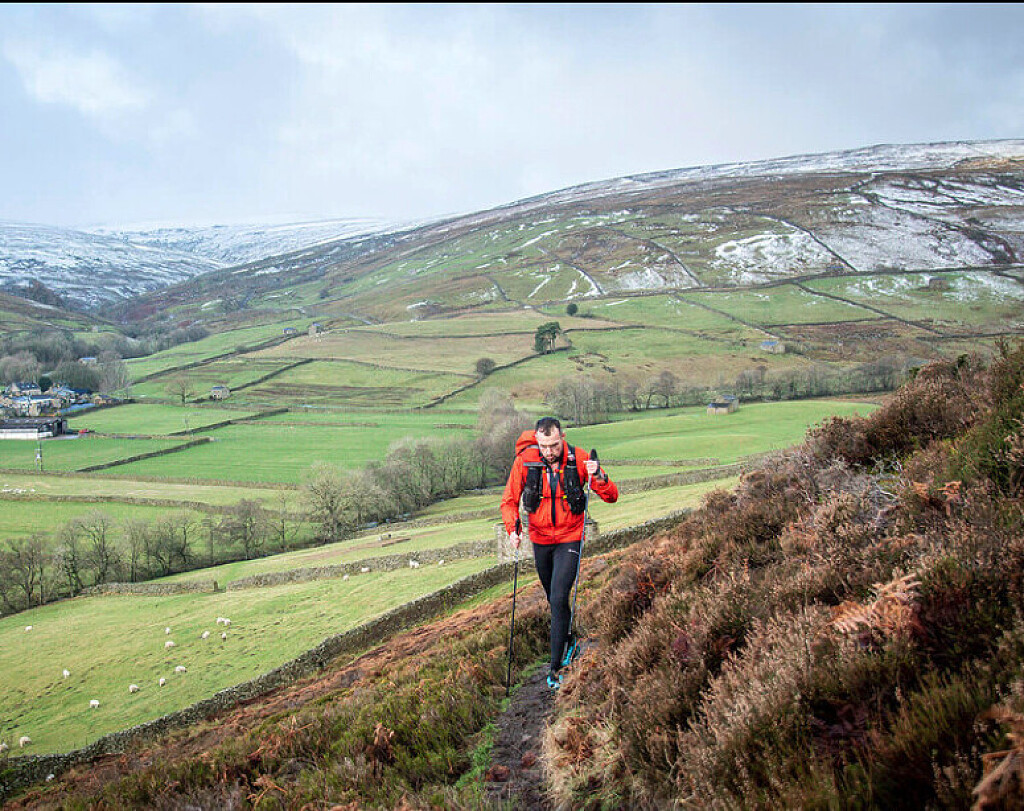Running News Daily
Top Ten Stories of the Week
10/26/2024
These are the top ten stories based on views over the last week.
Musician finishes 90 marathons in 90 days on Pacific Crest Trail
The U.K.'s Charles Costa just spend 90 days running a marathon a day to raise funds and awareness for mental health.
British folk-pop singer and ultrarunner Charles Costa, formerly known by his stage name King Charles, embarked on an extraordinary journey this year. Since July 20, Costa has been running the length of the Pacific Crest Trail (PCT), raising funds and awareness for mental health and suicide prevention. Having previously completed a 39-day run across the U.K., Costa’s latest adventure took him through the stunning yet punishing terrain from Canada to Mexico.
Running and music: a healing combination

For Costa, running has become much more than a physical challenge—it’s a form of therapy. After suffering a severe brain injury in 2010 following a skiing accident, both running and music have been central to his recovery. “I believe there’s a strong interconnection between running on the trail and making music to keep my mind and emotions balanced,” Costa said in a pre-run press release. After I’ve been running, I feel free and completely released from the struggles I face when I wake up. No other therapy can come close to the healing I experience from running and singing.”
To align with the end of his run, Costa has released the first single, “Nothing at the Most” from a new album that will be released in full in January 2025. “Mental health is an ongoing battle,” said Costa.“The message that I’m trying to get out with this run is that I really believe running is a very healthful, curing activity, that can completely untangle your way of thinking. It’s getting your heart pumping, it’s getting your lungs heaving, and it’s really getting back to your human self. It’s all about connecting your spirit to the world, and to music and to melody.”
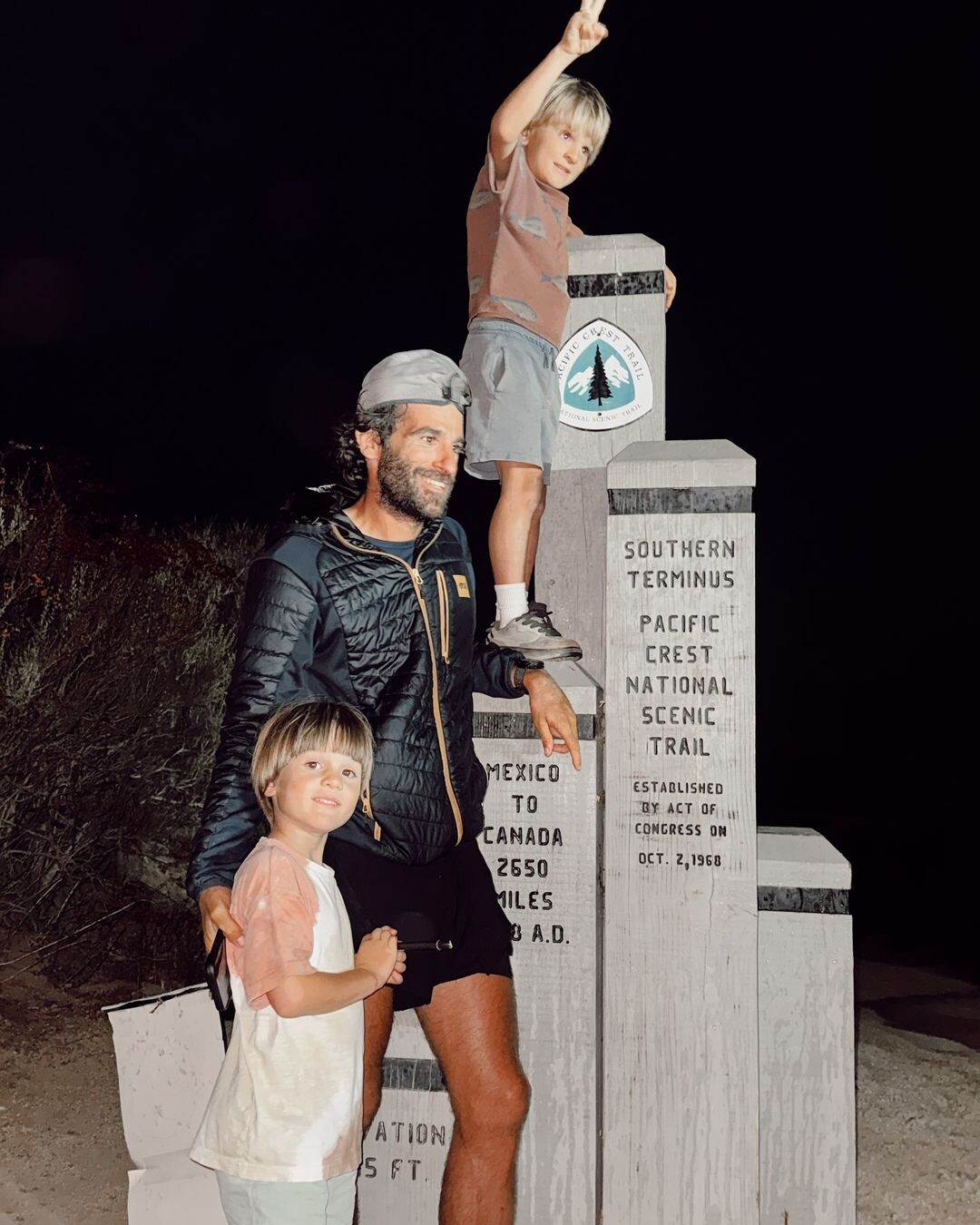
A struggle through the Mojave Desert
Costa’s run was filled with challenges, but perhaps the toughest came when he hit a heat wave in the Mojave Desert. “It was over 100 Fahrenheit [38 C], and my body started operating much slower,” Costa explained. As his condition worsened, his crew grew increasingly concerned. Fortunately, a chance encounter with a group of firefighters provided a turning point. “They checked my vitals and told us about heatstroke and heat exhaustion. It was a lucky encounter,” Costa told the LA Times. Costa took the firefighters’ advice and paused his trek to head to a nearby hospital for IV fluids, crediting this with likely saving his run and allowing him to continue despite the overwhelming heat.
Raising awareness, one step at a time
Costa’s run has raised around $190,000 for two charities: James’ Place, which focuses on men’s suicide prevention in the U.K., and the JED Foundation, which supports at-risk teens in the U.S. The mental health challenges Costa has witnessed, both personally and through the stories of others, have inspired his mission. “One moment can last an absolute lifetime… as long as you keep putting one foot in front of the other, you’ll get there in the end,” Costa says.
(10/18/24) Views: 162
Keeley Milne
What the elites eat: Marathon Edition
Curious about what elite marathoners eat to fuel their peak performance? From carb-loaded pre-race meals to post-race burger feasts, here’s an inside look at what the elites eat before, during, and after a marathon.
As runners and human beings, we’re naturally curious, slightly nosy people. With information instantly available with the twitch of a finger across our iPhone screens, this curiosity has never been easier to satisfy. Plus, many of our favorite runners are more transparent than ever about their training blocks, pulling back the blinds through social media to show what it takes to be the best. Which is why we’re ever-fascinated by the race-related nutrition strategy of elite runners, who often perform at superhero-like levels.
We asked a few elite marathoners what they eat surrounding race day—pre-race dinner, pre-race breakfast, and post-race celebration—so you don’t have to.
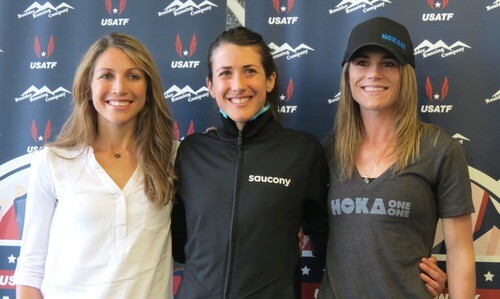
Note: One sentiment echoed among all of the athletes interviewed was that their diets are personal and have gone through lots of trial-and-error to be finessed to their specifications. No lifestyle should be replicated exactly.
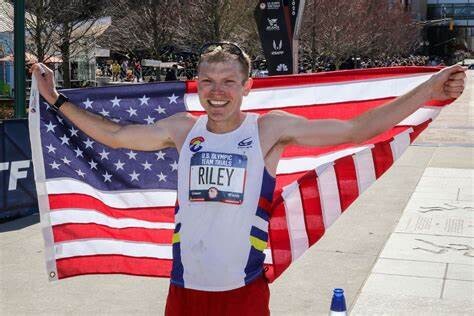
35, Boulder, Colorado
About him: First American and ninth overall finisher in the 2019 Chicago Marathon (2:10:36). Placed second at the 2020 U.S. Olympic Trials Marathon (2:10:02); Finished 28th in Tokyo Olympics marathon (2:16:26). After a second round of double Haglund’s surgery in 2022, he’s back in top form and running the 2024 New York City Marathon on November 3.
The night(s) before a race:
“I start thinking about meals two nights out, and I go carb-heavy on both. For the first night, I like to have Thai food, usually a noodle dish, and a side of rice. The only thing I’ll really avoid is spice since I’ve had issues from it a couple times. The night before, I do pasta, usually a marinara (that’s what a lot of races provide for the elite athletes), but a good pesto sauce works well, too. I mostly stay away from the creamy sauces. I don’t like to get too much more specific—you never know exactly what’s going to be available, so I try not to make particular foods part of my routine.”
Race morning:
“Race mornings I’ll get up at least three hours before (I prefer four, but with 7 to 8 A.M. starts, that becomes a little counter-productive), I’ll go for a short walk with some skipping or something, just to get the body moving. My first choice for breakfast is oatmeal with peanut butter, honey, and a little fruit mixed in. And at least one, usually two cups of coffee. It’s not something to avoid, but I recommend making sure that you have more than just simple carbs (cereal, muffin, etc), I find that if there isn’t at least some protein, I start getting that ‘empty’ feeling during my warmup, and if that mixes with the adrenaline, I feel real queasy. If I’m taking gels, I take one on the start line, maybe five minutes before. I also like Generation UCAN, which I’ll sip as I’m going through my drills, maybe half an hour out.”
During the race:
“I like to get my calories from gels and have just electrolytes in my bottles. Most major marathons provide drink stations every 5K, and I’ll drink about 8-10 oz of SOS per bottle (there can be splashing, and you never get it all out). I’ll take Roctane gels before every other drink station (every 30 minutes or so).”
Post-race meal:
“Most races I want a hash—lots of potatoes with some eggs, bacon, cheese, and veggies all mixed up, but after marathons my stomach takes a while to settle down, so I’m more in a lunch mood. So my go-to post-race meal is a big bistro bacon cheeseburger, ideally with an onion ring and barbecue sauce, side of fries, and a beer. I mostly stay away from fried foods during a build up, but I always take at least a week off after a marathon and at this point, that beer and burger is almost a Pavlovian ‘vacation time’ signal for my whole body.”
41, Flagstaff, Arizona
About her: She’s the fourth-fastest American woman in history based on her personal best (2:20:2) at the 2020 Marathon Project; Second-fastest American female half-marathon runner and former American record-holder (1:07:15). Most recently, she was 18th overall and the women’s master champion in the 2024 Chicago Marathon (2:30:12).
The night(s) before a race:
“Rice with chicken. I skip the veggies to not risk having to make a bathroom stop in the race.”
Pre-race breakfast:
“Two scoops of UCAN energy powder with whey protein, and a little bit of almond butter.” Bonus, Hall credits her husband, Ryan Hall, as being the best coffee maker, brewing pour-over, medium roast coffee blended with butter.
During the race:
Ketone-IQ—peach flavored.
Post-race meal:
“My favorite post-meal race is Thai food. I’m usually eating a lot of boring food before the race, so I want something spicy and more flavorful after.”
Bonus—Lunch during training blocks:
“Two scoops of UCAN powder, two pieces of gluten-free bread with Kerrygold Butter.”
36, Boulder, Colorado
About her: Won the 2019 Grandma’s Marathon and finished ninth in the 2020 U.S. Women’s Olympic Trials Marathon in 2:30:39. She was the top American finisher in the Boston Marathon in 2021 (fifth, 2:27:12, ) and 2022 (10th, 2:25:57). In January, she placed ninth in the Houston Half Marathon in a new personal best of 1:08:52.
The night(s) before a race:
“I always have the same thing. Basically, a couple cups of white rice and a chicken breast is where I tend to fall. White rice is going to fuel the most carbs per serving. I used to mix up potatoes and white rice, but for me, I digest white rice well, I feel better, it’s easy to find, simple, and works well.
I don’t care about spices—and I’m usually not making it myself if I’m not at home. Typically, before races, there’s a pre-race dinner, and chicken is an option. I wouldn’t do any cream-based sauces. If it tastes good, great. If it doesn’t, great. I don’t care.”
Pre-race breakfast:
“Typically it’s oatmeal with a tablespoon of peanut butter, a banana, and maybe honey. I’m not 100 percent satisfied with my pre-race meal, because sometimes it can feel a bit heavy in my stomach, because oatmeal does have some fiber. So I try to play around with things. Sometimes I’ll do a couple pieces of toast with a banana and peanut butter. I can switch between those two. Try to get 500-600 calories in, mostly from carbs, two-three hours before the race. Plus, I drink coffee with half-and-half.
Post-race meal:
“Immediately after the race, I honestly will grab whatever is available. Typically, after a race, we’ll be shuttled to a post-race holding area where you’re waiting, so there are usually refreshments there. I’ll slam Gatorade—anything with sugar and electrolytes. Maybe there’s my own bottle with Skratch in it. Banana, a protein shake. I’m pretty open, as long as it’s immediate.
And as far as later, it completely depends. I’m trying to do a better job at this—especially after a major marathon—but it kind of takes a while. You might get drug-tested, then shuttled back to your hotel, shower, then six hours later you’re like, ‘I need to eat.’ If it’s a marathon, I love a big burger with fries—the classic stuff, lettuce, tomato, onion, and tons of ketchup and mayo. That’s something my body would crave. Fries are my favorite food ever that I don’t typically eat during a marathon cycle.”
35, Louisville, Colorado
About her: Finished sixth in the 2017 London Marathon (2:25:38), seventh in the 2019 New York City Marathon (2:28:23), eighth in the 2019 Chicago Marathon (2:29:06), eighth in the 2021 New York City Marathon (2:27:00). Most recently, an Achilles injury forced her to pull out of the 2024 Chicago Marathon days before the race.
The night(s) before a race:
“I do 72-hours of carb-loading. So, obviously, in the build to that, carbs are key. Three days out from the race is when I start it. It is always the same. The night before, I have pasta with marinara sauce, and I don’t do a lot of protein with that. I do love angel hair, that’s my go-to. I also like rigatoni. Plus, I’ll have some type of bread and salad.”
Pre-race breakfast:
“The morning of, I always do a plain bagel and peanut butter with a banana. I’ve done that since high school. And I do an Americano with two shots. I eat that threeish hours out from the race.
During the race:
“I’ll take my first gel 15 minutes before the start of the race. I’ve been all over the place with what I take, but right now, Neversecond. Big fan of their Cola C30 gels. They worked wonders for me during this build. I had some stomach issues earlier in the build with long runs and couldn’t quite figure out what was going on, so I switched up my nutrition during, so never second has been a godsend.”
Post-race meal:
“After the race, it’s hard because usually my stomach is a mess. Not only did you just run really hard for two and a half hours, but you’re taking all this fuel during, so I have a really hard time eating solids immediately after the race. My choice if I can get it is soda. I’m not a big soda drinker, but after a marathon, all I want is a Coke, Sprite, or Ginger Ale. I’m always really thirsty when I finish.
Then later when I feel like eating, I always do a burger (stacked with all the fixings—sometimes adding bacon) and sweet potato fries with ranch. I never opt out of Ranch. Anything I can dip ranch in is a plus for me. And I order a Blue Moon. I’m not a beer drinker, but that’s what I want after a marathon.”
(10/18/24) Views: 157
Mallory Arnold
Course records under attack at the Amsterdam Marathon
Yalemzerf Yehualaw, Winfridah Moseti, Tsegaye Getachew and Philemon Kiplimo among the line-up for Sunday’s race
Yalemzerf Yehualaw and Winfridah Moseti are aiming to break Almaz Ayana’s women’s course record of 2:17:20 at the TCS Amsterdam Marathon on Sunday (Oct 20) while Tsegaye Getachew and Philemon Kiplimo will be hoping to get close to Tamirat Tola’s course best of 2:03:38.
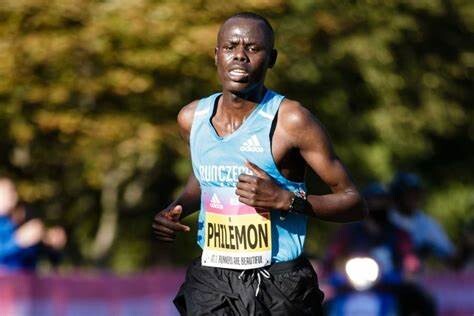
Yehualaw, 25, already has a best of 2:17:23 – set in Hamburg last year – and the Ethiopian won the London Marathon in 2022.
She says: “I want to give my best on Sunday, and of course, I’ve come to win. I’m looking forward to the support from the Amsterdam crowd.”

Kenya’s Moseti, who set a PB of 2:18:25 earlier this year, adds: “Training has gone well, so I expect a good result.”
With conditions expected to be good for marathon running with temperatures of around 15C and a light southerly breeze, Kiplimo, whose best is 2:04:56, says: “Training has gone well, and I feel fit. I expect a good result.”
Getachew is perhaps the favourite in the men’s race, though, given the fact he won the race in 2022. “Amsterdam changed my life,” he says. “I remember not being able to run the last kilometre, but the incredible crowd really carried me.
“I’ve run in Tokyo and Paris, but Amsterdam’s course really suits me. I’ve trained well, and I have two goals: to win and to set a personal best.”
His personal best stands at 2:04:49.
The event will be shown on Discovery+ and Eurosport and starts 9am local time in the city’s Olympic stadium.
(10/18/24) Views: 144Athletics Weekly
Natasha Wodak hoping to surprise herself at Toronto Waterfront Marathon
The TCS Toronto Waterfront Marathon (TWM) returns on Sunday, doubling as the Canadian Marathon Championships. For our Canadian elite athletes, Sunday’s race provides a chance to qualify for the marathon at the 2025 World Athletics Championships, to be held in Tokyo. Canadian record holder Natasha Wodak will toe the line in Toronto for the first time in 11 years, setting her sights on her first-ever Canadian marathon title.
Wodak made her marathon debut here in 2013. The 42-year-old from Vancouver has been on a golden streak this year, winning the Vancouver Half Marathon in June and Vancouver’s Eastside 10K in September. But earlier this year, she fell short of her goal to qualify for Canadian Olympic team after completing four marathon builds and taking three attempts at the race in the span of 18 months.
“The marathon is a beast”
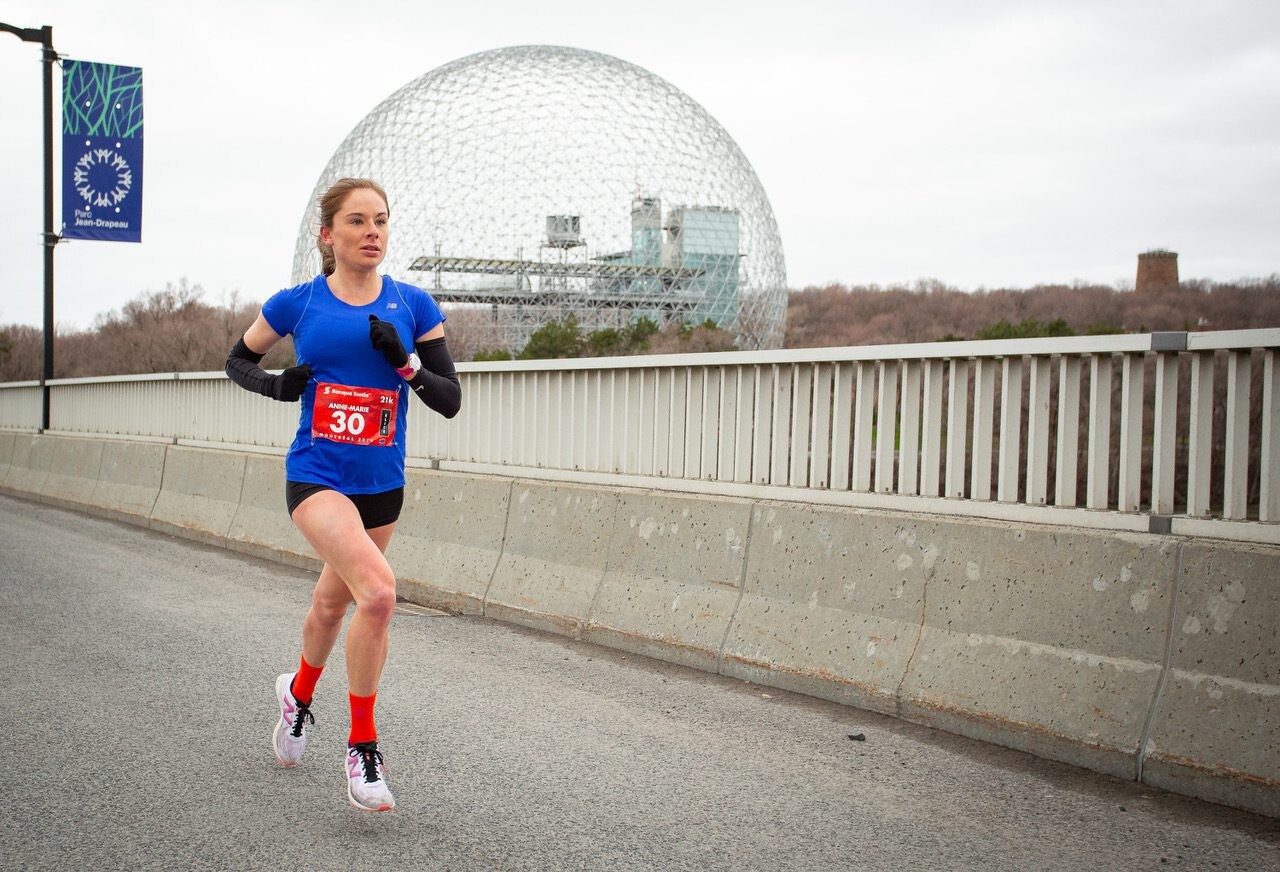
“Nothing is guaranteed,” Wodak says. “Never in a million years would I have thought that after running 2:23:00, I wouldn’t be able to come within four minutes of that, four different times in 18 months.” Wodak completed the 42.2K event at the 2023 Budapest World Championships, 2024 Houston and Hamburg marathon events, falling short of the Olympic standard each time, and had scratched from the 2023 London Marathon after coming down with a stomach bug. “The marathon is a beast; you’ve got to have the right day, the right fitness, the right weather–everything has to click on the right day.”
The two-time Olympian holds a personal best of 2:23:12, which has stood as the Canadian record since the 2022 Berlin Marathon. “The A goal is to win the Canadian marathon championships,” she says, hoping to add that title to her already impressive resume. “Everyone wants to be a national champion.”

After steering away from her original plan to race at the Valencia Marathon, Wodak is taking a different approach at Toronto’s big-city race; she can finally enjoy racing in Canada in front of family and friends without the pressure of hitting the Olympic standard. She adds that the generous prize purse offered by TWM was an incentive. She revealed she plans on starting out conservatively, with the hope of having a fast second half. “I’ll go out at 2:25 to 2:26 pace, and hope to catch a few of the women who go out too hard,” she says. “It would be really nice to place in the top three. If all goes well, maybe I can surprise myself and others by having a really fast last 10K.”
After her attempts to qualify for Paris 2024, Wodak says she has learned not to take anything for granted. She says she began to jump into workouts with friends, running because she wanted to and doing what felt good. “I did enjoy the process over time, so I have no regrets,” she says. “It’s a privilege to do this.”
Erin Mawhinney to make marathon debut
Defending TWM half-marathon champion Erin Mawhinney will be doubling her usual distance to make her first-ever attempt at 42.2K. The 28-year-old, a two-time winner of the Under Armour Toronto 10K, has been slowly building up her mileage while training for the past three years with coach and two-time Olympian Reid Coolsaet; at the peak of her build, she reached 190 km in one week–quite a contrast to the maximum of 43 km she used to run weekly in university. The increase in mileage means increased time dedicated to training, adding to her already-busy schedule; the Hamilton native works full-time as a nurse, with the occasional night shift. “My apartment is a mess all the time, and I’m always out of groceries, since I’m eating more to support that mileage,” she says.
“You go in a little bit blind,” Mawhinney says. “You can sort of predict from the half-marathon what might happen, but it’s also a completely different event.” Her half-marathon best stands at 1:11:50, which she ran in March. “Somewhere in the low 2:30s would be a great day, but I’m mostly just excited to try out a marathon.”
Anne-Marie Comeau to seek redemption
Anne-Marie Comeau of Saint-Ferréol-les-Neiges, Que., is the reigning Canadian Marathon Championships silver medallist; the 2018 winter Olympian in cross-country skiing led for 42.1 kilometres of last year’s race before being passed by Quebec City’s Caroline Pomerleau, who nabbed the title. Comeau, who is 28, struggled over the last 10 km, and aims to pack her pockets with gels this year to avoid fading in the final stretch. “I had a rough year,” she says. “I’ve done a lot of marathon builds without actually racing.” Comeau was set to race the Houston Marathon and the Boston Marathon, but had to scratch from both, first due to Covid, and then to a shoulder dislocation while skiing.
Finally getting the chance to race, Comeau has set big foals for herself. “I want to get a personal best,” she says. “My marathon PB (2:34:51) is from last year on this course. I’m going to start a bit slower, at 2:31 to 2:32 pace, and see if I’m able to push harder toward the end.”
International field
Waganesh Mekasha of Ethiopia has her eyes set on the course record this year. The 32-year-old holds a personal best of 2:22:45 from the 2019 Dubai Marathon and took second in Toronto last fall, with a time of 2:23:12. “I enjoyed the race last year,” she says. “The course was great. The pacer dropped early and it affected us.” Her best time sits just off the course record of 2:22:16. The 2023 Ottawa Marathon champion feels as though she has prepared even better than last year. “If the pace goes out well and the weather is good, the course record is possible,” she says.
Ethiopia’s Roza Dereje comes into the race with the fastest personal best in the women’s field (2:18:30), and will also be fighting to take down the five-year-old course record. “I’m ready and prepared to challenge the course record,” she says. Dereje, 27, finished fourth in the marathon at the Tokyo Olympic Games, and became a mother in 2023. This is her first time visiting Canada.
For the first time in the race weekend’s history, the 5K race, traditionally held on the same day as the marathon and half-marathon, has been moved to Saturday; the race has already raised more than $3,000,000 for the TCS Charity Program.
How to watch
The 2024 TCS Toronto Waterfront Marathon and Canadian Marathon Championships can be streamed on Sunday, Oct. 20, on World Athletics Inside Track, CBC Sports, or the CBC Gem app. The TCS Toronto Waterfront Marathon is one of the first North American marathons to be featured on the WA Inside Track worldwide feed. This year, 30,000 participants from 70 countries will take part in Toronto’s race weekend (a record). All runners can be tracked using the official TCS Toronto Waterfront Marathon app, available for download on the App Store and Google Play.
(10/19/24) Views: 124Cameron Ormond
Cian Oldknow and Glenrose Xaba eye glory at Sanlam Cape Town Marathon
Running seasons don’t come as brilliant as the ones both Cian Oldknow and Glenrose Xaba had, do they? And it could well get better for them at the Sanlam Cape Town Marathon tomorrow (Sunday).
National champions in the marathon and half marathon respectively, the two athletes have run like the wind in 2024 as they broke personal barriers even they probably did not think possible.
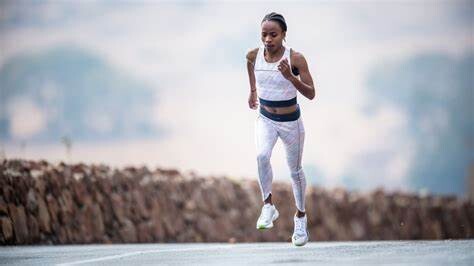
Such are the rewards for talented individuals who refuse to rest on their laurels just because they are gifted but instead work hard at improving themselves that the duo have arguably sparkled the brightest of all road running athletes in South Africa this year.
Oldknow, who runs in the purple and yellow colours of the Hollywood Athletics Club, made her full marathon debut in Seville back in February where she ran a scintillating 2:25:08 – the second fastest time by a South African female. Most impressive about that run was Ms PB’s consistent splits, an illustration of her calmness under pressure as she stuck to her race plan like a seasoned campaigner.

Proof that Oldknow was good for the 42.195km distance was further provided when she clinched the national title at the Durban International Marathon with a solid 2:29:46. She put the cherry on top of her marathon debut season by being the first South African to finish the race at the Paris Olympics, Oldknow crossing the line ahead of seasoned campaigners Irvette van Zyl and Gerda Steyn.
Xaba, meanwhile, dominated the 10km scene this year with the clincher of her season being that she won the Spar Grand Prix Series. The popular women’s series has been the preserve of foreign runners for the last six years with Ethiopian Tadu Nare dominant after Namibia’s Helalia Johannes won it twice.
The Boxer Athletic Clubs starlet was actually the last local runner to win the Series back in 2018. Perhaps more telling of the kind of season Xaba had is the fact she broke Elana Meyer’s two-decade long 10km record. Add to that the fact she retained her national half marathon title and you begin to understand just why 2024 will go down as an episode in Xaba’s glittering career never to be forgotten.
And it is about to get even more memorable as Xaba makes that long-awaited graduation to the full marathon in Cape Town tomorrow.
How she will measure up against Oldknow who has already shown herself to be a superb marathoner is the main attraction of the popular Mother City race, as it continues its quest to be included on the World’s Abbotts Major Marathons.
Certain to spice up the Xaba/Oldknow ‘duel’ is the fact that the organisers have dangled a US$5000 carrot for the South African marathon record. Oldknow has already shown she has it in her to unseat Gerda Steyn as the fastest marathoner in the land with that brilliant time of hers in Seville. What we don’t know is how Xaba can do in the longer distance.
But she has been hard at work preparing for this race and while she has said she is looking to have a memorably fun debut, such is her competitiveness that you can bet on Xaba running a pretty fast time.
The two of them will be helped in their quest to break the national record by the stellar women’s field of top class internationals they will be racing against.
Tsige Haileselassie, who won with a personal best of 2:24:17 last year is back to defend her title and that can only mean a fast women’s race.
Who between Oldknow and Xaba will be able to keep up with her is what makes tomorrow’s race such an exciting prospect. Whichever way it goes though, the two starlets are each sure to chalk up 2024 as a fantastic season.
(10/19/24) Views: 121Matshelane Mamabolo
Recovery runs: Everything you need to know
At first glance, the words ‘recovery’ and ‘run’ might seem juxtaposed. After all, running is about expending energy, while recovery seems to be about recouping it. Even if we accept the term, what’s the point of a recovery run? And how does it distinguish itself from other forms of running, such as easy running? Understanding the definition and purpose of recovery runs can help you to incorporate them into your routine – boosting your recovery and overall fitness.
What’s the point of a recovery run?
In the aftermath of a hard workout or race, your muscles can become sore – a phenomenon known as DOMS (short for ‘delayed onset muscle soreness’). In this state, the prospect of running may seem unappealing, but doing so can loosen up the body by increasing blood flow to the muscles and flushing out waste. This, in short, is the purpose of a recovery run.
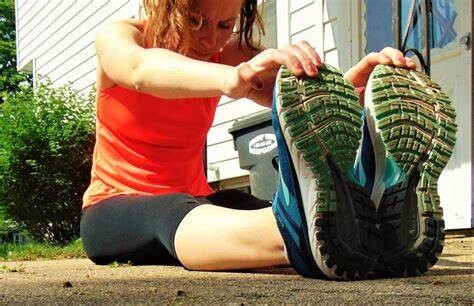
How do you do a recovery run?
In many ways, a recovery run is similar to an easy run. It’s done at a slow pace (or in heart rate zones 1 or 2, for those who use that as a metric) and should feel easy and relaxed throughout. However, from a duration perspective, recovery runs tend to be around 20-30 minutes in length, whereas easy runs could conceivably stretch to an hour or more. The reason for this is that, after 30 minutes of running, the body begins to produce metabolic waste, which in itself requires recovery time. When it comes to recovery runs, think easy and short.

What is active recovery?
Another terms that seems self-contradictory, active recovery is loosely defined as ‘low-intensity exercise that a person performs after high-intensity exercise to improve recovery’. Recovery runs fit firmly into this category. The alternative to active recovery is passive recovery, defined as ‘a period of inactivity after exercise where the body is allowed to heal without any additional physical activity’. Neither is better than the other, and the smart runner will use a combination of both passive and active recovery. As a general rule, though, passive recovery is the better choice if you’re showing signs of overtraining. These signs include extreme tiredness, lingering soreness, trouble sleeping, irritability or an elevated resting heart rate.
Is recovery different for men and women?
Although both sexes need to recover adequately after hard workouts and races, there is some evidence to suggest that recovery times vary between men and women. In a new study that looked at men and women who’d just run a half marathon, women showed earlier functional recovery than men. There are several potential reasons for this. One is that women have lower muscle mass and power output than men, so are therefore considered less prone to fatige. Another is the role of estrogen, which might lower the impact of exercise-related skeletal muscle damage. That said, women’s recovery is heavily influenced by where they are in their menstrual cycle, with one study finding that menstruation raises metabolic rate by more than 6% – something that will an impact on recovery and overall perception of fatigue.
What are the alternatives to recovery runs?
Of all the types of running session, recovery runs are probably the easiest ones to substitute for other cross training activities. Low-impact activities such as cycling or swimming will provide the same benefits, without any of the pavement pounding. If you’re a runner who is susceptible to impact injuries, such as stress fractures or shin splints, it’s worth thinking about whether your next recovery session actually needs to be a run.
(10/18/24) Views: 121Rick Pearson
A cold, hard look at extreme winter races
Winter is when races careen from the cosy, coddling courses of autumn into a forbidding tundra that both terrifies and exhilarates. It’s in this frozen landscape that the most extreme races are forged—competitions that take things to unsettlingly unconventional extremes, like sporting the scariest name or boasting the largest field of hungover revellers.
From a race season positively steeped in superlatives, here’s a sampling of extreme cold-weather races that boast the most—for reasons silly and chillingly serious—and strategies for making the most of them.

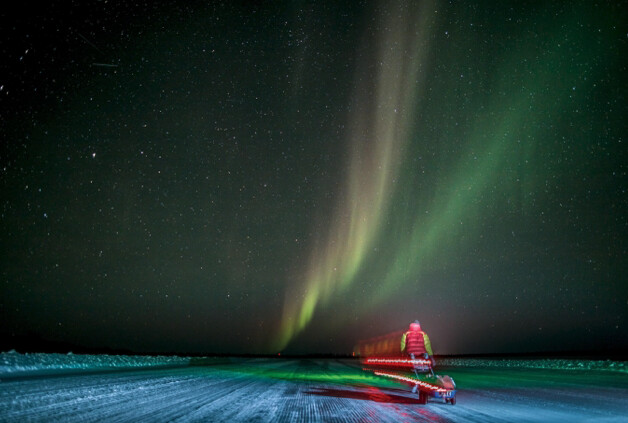
THE WILDEST
Polar Bear Marathon
Nov. 23, 2024
Churchill, Man.
Distances: 21.1 km, 42.2 km, 50 km
albertmartens.com
An event where vehicles tail runners in case a polar bear wanders onto the course truly deserves the title of winter’s wildest race. Beginning from Churchill, Man., the course takes participants along the coast of Hudson Bay for a challenge that balances breathtaking beauty with physical and mental rigour.
“A few times there have been polar bears right on the road where they run,” says race director Albert Martens. “However, we do provide safety for the runners, escorting them with a vehicle. Often the Canadian Rangers are out and assist us, as well.”
As challenging as this event is, the joys of the race aren’t to be outdone by the hardships. “One of the highlights of the run is the beautiful sunrise at the start overlooking Hudson Bay, and the post-marathon banquet, where the runners get to know each other better,” says Martens. He adds that one of the “swag bag” items runners receive is a polar bear carved out of soapstone. Although signups for this year’s event were set to close Oct. 1, it’s a race worth keeping in mind
THE BOOZIEST
Santa Will Run for Beer 5K-ish
Dec. 7, 2024
Bethlehem, Pa.
Distance: “5K-ish”
runsignup.com/Race/PA/Bethlehem/SantaWillRunforBeer5Kish
When it comes to combining Santa and suds, this race really raises the bar. Suit up in your best Kris Kringle costume and simultaneously work up and quench your thirst as you race between more than a dozen drinking establishments. The order you hit the bars in is up to you, but you’ve got three hours to stop at them all before raising a celebratory glass with your fellow runners at Molly’s Irish Grille and Sports Pub.
Speed counts—the first 24 runners at each location get a free beer—but so does presentation, so don’t skimp on style when putting together your Santa look. “Don’t go easy on your costume,” suggests Rochelle Romeo Kane, managing director of Run Lehigh Valley, which organizes the race. She also recommends mapping out your “beer strategy” beforehand: “Are you more of a ‘run fast and hit the close bars’ or ‘go for the early long-haul’ kind of runner? Either way, come with your plan and know it will change!” Runners must be at least 21, but it’s a race that
THE JOLLIEST
Santa Shuffle Fun Run & Elf Walk
Dec. 7, 2024
British Columbia: Abbotsford, Chilliwack, Langley
Alberta: Edmonton, Calgary
Saskatchewan: Regina
Manitoba: Winnipeg
Ontario: Hamilton, Kemptville, Kingston, Ottawa, Sudbury, Thunder Bay, Toronto, Whitby
Quebec: Montreal
Prince Edward Island: Charlottetown
Nova Scotia: Halifax
Newfoundland and Labrador: St. John’s
Additional virtual events
Distances: 1 km, 5 km
santashuffle.ca
What started in 1990 as a fundraiser by Running Room members to support Salvation Army programs in Edmonton has become a countrywide celebration of seasonal giving, as legions of speedy Santas are unleashed from start lines coast to coast. Santa Shuffle races, which continue to benefit the Salvation Army, boast the most Santas in Canada’s winter-running scene, but also pull in plenty of reindeer, elves and assorted festive fashionistas. Clever costuming pays at the events, with prizes for the best individual, group and pet get-ups (see the event website for details).
THE PRICIEST
Antarctic Ice Marathon
Dec. 13, 2024
Union Glacier, Antarctica
Distances: 21.1 km, 42.2 km
icemarathon.com
With a registration fee approaching $30,000, the Antarctic Ice Marathon isn’t a race you’ll enter on a whim, but the experience it offers is as rich as its price tag, and it’s sure to earn a spot on many runners’ bucket lists. You’ll be whisked by jet from Punta Arenas, Chile, to Union Glacier in the Antarctica interior, within a few hundred kilometres of the South Pole. Although aid stations, snowmobile support and medical personnel will be available, completing either the event’s marathon or half-marathon will take plenty of self-motivation; as race organizers point out, there won’t be any crowds to cheer you on—not even penguins venture this far south. Runners should also note this race can be as unpredictable as it is unforgettable. “The Antarctic Ice Marathon presents a unique challenge with its extreme cold and unpredictable weather,” says race director Becca Pizzi. “We advise runners to prepare for low temperatures and be ready for sudden shifts in conditions. Proper layering and mental resilience are key to tackling this unforgettable race.”
THE HEAD-POUNDINGEST
The 18th Hangover Hike
Jan. 1, 2025
Dewsbury, England
Distances: 15 km, 27 km, 34 km
ldwa.org.uk/TheIrregulars/W/2112/hangover-hike.html
An event that gives a refreshingly honest nod to the realities of New Year’s revelry, the Hangover Hike in northern England encourages hikers and runners to get an early and (mostly) sober start to 2025. The New Year’s Day run/hike around the rural roadways, hills and hiking trails of the town of Dewsbury (about 15 km south of Leeds) will ease participants into the challenge ahead with tea and toast at registration. The event’s three hikes—15 km with just over 300 m of ascent, 27 km with about 520 m of climb and 34 km with almost 550 m of ascent—start and end at The Leggers Inn. The Irregulars group of the Long Distance Walkers Association, which organizes the event, puts it succinctly: “A brisk walk or run, a breath of fresh air, a wee dram en route and a hair of the dog at The Leggers. What better way to start the new year?”
THE LOOPIEST
Frozen Falcon
Jan. 12, 2025
Falcon Beach, Man.
Distance: As far as you can go in eight hours
ontheedgerunning.com/home/frozenfalcon
Looped courses can help take the sting out of daunting distances by breaking down the kilometres into bite-sized chunks. The Frozen Falcon’s 6.5-km course at Falcon Trails Resort in southeastern Manitoba is the perfect length to keep your run manageable without it becoming monotonous, but be aware of the course’s unique challenges: “This race is run on groomed trails, however, after a few laps the snow can become a little like sugary mashed potatoes,” cautions race director Joel Toews. “Get working on that lower-leg strength! Also, you’re going to head into the yurt each loop, where there is food and a wood stove. It’s pretty cosy, so don’t get sucked into the comfort. Get back out there as soon as possible.”
THE SCARIEST-SOUNDING
Hypothermic Half Marathon
Vancouver: Jan. 19, 2025
Edmonton: Feb. 2, 2025
(A planned second Edmonton event was not confirmed before publication.)
Kelowna, B.C.: Feb. 9, 2025
Halifax: Feb. 16, 2025
Calgary: Feb. 23, 2025
Winnipeg: Feb. 23, 2025
Additional virtual events
Distances: 10 km, 21.1 km
hypothermichalf.com
The Hypothermic Half Marathon is no walk in the park, but this intimidating-sounding series of winter races has a bark that’s worse than its frostbite. That’s due in large part to the warmth and hospitality shown by volunteers and supporters during and after the races. There are other ways to stay toasty at the Hypo Half, however—at last year’s event in Edmonton, local runner David Eliuk sported 120 T-shirts in a bid to set a new world record for the most T-shirts run in a half-marathon. He achieved the feat, but was bested by American Dan Harvey—who donned 127 shirts at an event a few months later—before Eliuk’s record could be ratified.
THE LONGEST
Montane Yukon Arctic Ultra
Feb. 2–14, 2025
Teslin, Yukon
Distances: 340 km, 640 km
arcticultra.de/home
This race could be a contender for the most extreme in several categories—winds whip up with unfathomable force while temperatures can plummet to -40 C—but its length is what really makes it a standout. Starting from the village of Teslin and finishing in the town of Faro, the ultra’s shorter race totals 340 km, while the main event (including a 150-km route out and back from Faro) adds up to an eye-watering 640 km. Competitors can tackle these either on foot or skis or by mountain bike.
“Many races with these kinds of distances are organized in stages,” says race director Robert Pollhammer. “In our race, athletes are on the go day and night, sometimes up to an average of 20 hours per day.” He cautions that sleep deprivation can be dangerous in such an extreme environment and emphasizes the importance of having a strong race strategy.” While cautioning that the race isn’t for everyone, he says, “If you like the cold, the vastness of nature and being in a race with a family-like atmosphere, the
THE LARGEST (LATITUDINALLY)
6633 Arctic Ultra
Feb. 27 to March 8, 2025
Eagle Plains, Yukon
Distances: 120 miles (193 km), 380 miles (612 km)
6633ultra.com
Canada’s most northerly winter foot race, the 6633 Arctic Ultra (named for the latitude of the Arctic Circle in the Yukon—66 degrees, 33 minutes north) tests the ambitious and adventurous in a gruelling trek across two Canadian territories. Beginning in Eagle Plains, Yukon, runners who tough it out will cross the Arctic Circle to finish lines in the Northwest Territories hamlets of Fort McPherson (193 km) and Tuktoyaktuk (612 km).
Blistering wind and cold make the 6633 one of the most physically punishing races on Earth—but the competition’s mental challenge is greater still, according to race co-director Stuart Thornhill. “The mental fatigue experienced and resilience required cannot be underestimated,” Thornhill says. “Our athletes experience long periods of isolation in the dark and extreme cold, leading to extreme hallucinations.” Sticking to script, he says, is key to success at the 6633: “Those who make it through have a plan which they follow, eating when they need to, sleeping when they need to. They don’t get caught up racing someone else and breaking their plan. I have seen people who have been at the back of the pack for most of the race and have come in the top three finishers, because they stuck to what worked best for them.”
THE SPICIEST
Chilly Half Marathon
March 2, 2025
Burlington, Ont.
Distance: 21.1 km
raceroster.com/events/2025/84601/2025-chilly-half-marathon
The Chilly Half Marathon is a cold-weather race that throws some serious heat. While most of the events on this list aren’t really built for racking up personal bests, the course through downtown Burlington and along Lake Ontario’s western shore is perfect for burning rubber. “This will be the 29th year of the fun, fast, flat race that welcomes 4,000 runners to downtown Burlington,” says Kelly Arnott, co-CEO and co-owner of race organizer VR Pro Inc.
An event that marks the start of the spring road-running season in eastern Canada, the Chilly Half is just as popular for its post-race revelry as for its scenic, zippy course. Spectators and runners can shake off the March chill by coming together for a bowl of piping hot chili. “If it is a chilly day, we will warm you up with a bowl of hot Stagg Chili following the great race,” says Arnott.
THE MOST ENDURING
Around the Bay Road Race
March 30, 2025
Hamilton
Distances: 5 km, 10 km, 15 km, 30 km, additional virtual events
bayrace.com
Launched in 1894—three years before the Boston Marathon—Hamilton’s storied Around the Bay Road Race is North America’s oldest long-distance running event. More than a testing ground for generations of runners, Around the Bay is itself something of an endurance feat. Despite some challenging obstacles (in recent years organizers have had to switch up the course due to renovation and construction projects in the city), the 30K run around Hamilton Harbour remains a cultural focal point for the local community and favourite destination race for runners worldwide. Race-day weather has been known to swing wildly from warm and sunny one year to blizzard-like the next, so the best way to prepare is to be consistent in training, suggests race director Anna Lewis. “Keep to your training schedule even on bad weather days, because you never know what the weather will be like on race day,” she says, adding that wisely managing effort is also key to negotiating tougher terrain near the end of the race. “Don’t go out too fast, so
FROZEN FEATS
Here are some extreme winter exploits that have earned a place in the Guinness Book of World Records.
Coldest marathon
By its name alone, the Siberian Ice Marathon seems a convincing contender for the world’s coldest marathon—and it’s not just hype. Temperatures as low as -39 C were recorded at the 2001 race in Omsk, Russia. While it’s the coldest marathon recognized by Guinness, organizers of the Pole of Cold Marathon in Oymyakon (also in Siberia) reported the mercury crashing to -55 C at its most recent event on Jan. 12, 2024.
Fastest half-marathon barefoot on ice/snow
Not content to set this record by running a bone-chilling half-marathon barefoot in 1:50:42, Josef (Joska) Šálek added an extra dash of shivery showmanship by running the distance in nothing but shorts. The Czechian set the record on a course in his home country on Feb. 18, 2024.
Fastest marathon by a female dressed as Santa
From snowmen to ice-cream cones, there’s no end to the cold- and winter-centric costumes runners will don to break records, but most of these attempts are made in spring or fall. Hand it to British runner
WINTER RACE TIPS FOR FIRST-TIMERS
Don’t dress just for the start line
As tempting as it is to bundle up while waiting for your race to start, things can heat up pretty quickly once you’re on the move, and overheating can sap your performance and enjoyment of the race. If temperatures are dry and above freezing, dressing as though it’s 10 C warmer than it really is will keep your engine running cool as you hit your stride. On colder, windier days, dress in layers that can easily be discarded or passed off to a supporter on the sidelines.
Show up fully charged
The energy demands on your body when racing in colder temperatures aren’t significantly different from those of any other time of year, so there’s no need for drastic changes to your pre-race fuelling. The same can’t be said of your running tech, however. Plummeting temperatures can be a big drain on the battery capacity of your watch, headlamp and heart rate monitor, even during shorter races. Make sure the devices you rely on are fully charged; don’t assume the GPS that saw you to the end of a summer 5K on a 15 per cent
(10/20/24) Views: 94Andrew Bowman wins Detroit Free Press Marathon men's race; then greets his triumphant wife
Andrew Bowman said it was all part of the master plan.
The 30-year-old from Ferndale held up his end of the deal when he captured the men’s title with a time of 2 hours, 17 minutes and 47 seconds in Sunday’s 47th Detroit Free Press Marathon presented by MSU Federal Credit Union.
And just 25 minutes later, he was waiting at the finish line with a big hug and embrace of his wife, Sydney Devore-Bowman, who captured the women’s title with a 26.2-mile clocking of 2:42:46.
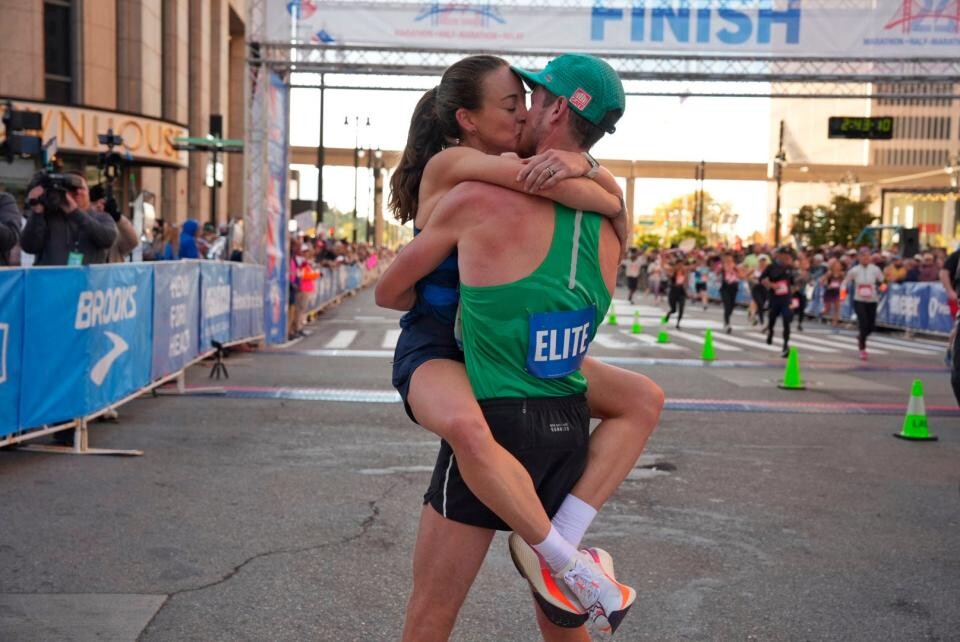
Both had previously won marathons at Pittsburgh, Sydney in 2018 and Andrew on May 5 of this year, but this was a first time to celebrate together in their burgeoning long-distance running careers.
Good weather, but unwelcome wind at the end
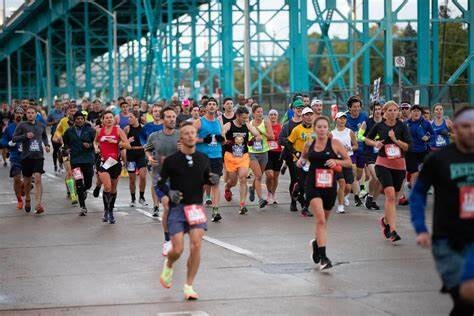
“The motivation with Pitt is where she had won it,” said Andrew, a running coach and personal trainer. “That’s where her marathon career took off and she’s the one that got me into marathon running. And she was like, ‘This could be a shared moment for us.’ And I’m so grateful for that. It’s another moment to share in this thing that we’re passionate about — all the highs and the lows. And it’s just a good reminder, we have this common interest, but even coming into this with all the nerves, we just kept looking at each other and we’re like, ‘Even if we don’t pull it off, I still love you and I’m still grateful to be on this journey with you and to enjoy this moment.’ ”
The race was run under nearly ideal conditions, low 40s at the start and winds up to 11 mph on the international course that crossed both the Ambassador Bridge and Detroit-Windsor Tunnel. The route also featured Detroit neighborhoods, including Woodbridge and Indian Village, passing through the Eastern Market and along the Dequindre Cut before ending at Campus Martius.
“The wind was a factor,” Bowman said. “It got a little bit breezy, especially coming towards the finish. Especially when that starts to happen and you are at the end of your rope. It’s that much more difficult to stay motivated to keep pushing.”
Bowman, a 2024 U.S. Olympic Marathon Trials qualifier with a personal best 2:15:54, pulled away from South Haven’s William Cadwell (2:21:06) and Lansing’s Zacchaeus Widner (2:21:22) over the final 6.2 miles of the race, but it wasn’t easy.
Bowman, posting an average pace of 5:24 per mile, felt like he was cruising during the early portions of the race, but it got much harder later on.
Impressing their Ferndale friends
“I kept telling myself, ‘Keep it easy, keep it easy.’ By my 10K it’s like 5:02 or 5:03 (minutes per mile) and it feels terrific and fairly easy, but then I started doing 5:13, there was a 5:20 in there,” Bowman said. “You just feel like a snail and all you can think about is, ‘Oh, goodness, I hope nobody is coming up behind me.’ All you’re trying to do is smile at the people, keep yourself in it, stay excited. And it’s the toughest spot ever because it’s you against that voice that keeps saying, ‘You’re not going to make it, you’re not going to make it. You’re in a bonk, you’re going to start walking.’ And, so if you can overcome that … I think that’s the biggest feeling of relief right now. I saw the banner for 26 (miles), I knew where I was, I made turn, ‘Just get there. You’ve got this.’ ”
Just getting the finish line proved to be challenge.
“You’re depleted by that point to have the will to be able to keep going forward," Bowman said. "It’s extraordinarily difficult no matter how many times I do this. Whether it was Pitt, Ottawa, the (Olympic) Trials, you’ve got to stay in it. Couldn’t be more grateful and adjusting my body to be able to do this.”
Bowman hails from the small farm town of Marlette, where he led his high school cross-country team to a runner-up finish in the Division 3 state meet. He went on to run for coach Paul Rice at Oakland University.
Following his wife’s win, Andrew was looking forward to celebrating the victories later on in the day with their Ferndale friends.
“We have a running group that we with meet with every Thursday. And so, to do this in front of them — and like I have athletes that I coach here — to show them what’s possible ... it means a lot. I’m just happy to be in this position to be able to show them like, 'Here’s what you can do if you really like stay consistent and just love what you do.’ It’s my second win in the marathon and to do it here is special, too.”
For the first time, the Detroit Free Press Marathon included an Elite field, featuring more than 80 top runners from Michigan, Canada and North America. Winners of the men's and women's division each win $3,000; the handcycle winner takes home $600.
The record for male runners was set by Greg Meyer, who needed just 2:13:07 to cover the 26.2-mile course in 1980. Doug Kurtis holds the record for Detroit marathon victories with six (1987-92), with Christopher Chipsiya (2018-19), Zachary Ornelas (2013, 2015) and Ryan Corby (2021-22) also claiming repeat titles.
(10/21/24) Views: 94Brad Emons
Hurricane Helene Devastated This Running Hotbed. Professional Athletes Are Helping Rebuild It.
“We had no idea the gravity of what was coming,” said Olympian Abbey Cooper.
On a typical Tuesday, Abbey Cooper usually tackles a threshold workout before leading practice as the coach of a youth cross-country team in Boone, North Carolina.
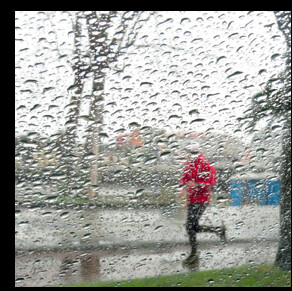
Last week, the 2016 Olympic 5,000-meter runner was working as a volunteer, answering phones at her church, Alliance Bible Fellowship. For hours, the new mom helped survivors of Hurricane Helene obtain generators and other necessities in the wake of a natural disaster.
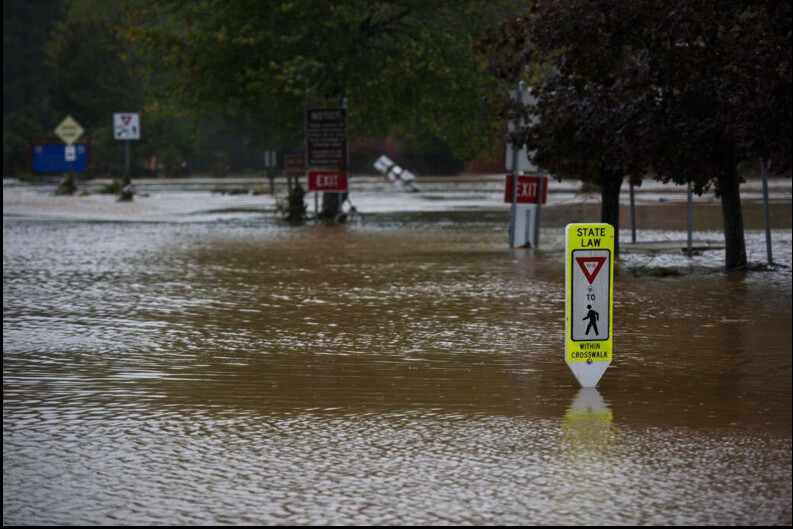
When Helene made landfall in Florida as a Category 4 storm on September 26, it created a 500-mile path of destruction across the southeast. Homes were washed away, roads were destroyed, and electricity was wiped out in communities across six states, where the death toll has risen to 227. Many are still unaccounted for or missing, according to The AP.
In the rural mountain towns of western North Carolina, the hurricane decimated communities with unrelenting rain and devastating floods. And emergency response was made more difficult due to hundreds of damaged roads and downed bridges.
Now as people begin to recover and rebuild, several elite runners in Boone and Blowing Rock, North Carolina, are taking major steps to give back and raise awareness for the organizations working tirelessly to support those in need. From cleaning up trails to delivering meals and disaster kits, professional and collegiate athletes who train in the area are providing critical aid and urging others to help in recovery efforts.
“We had no idea the gravity of what was coming”
Cooper, her husband, Jacob, and their 20-month-old daughter, Mercy, live in a valley about 15 minutes from downtown Boone. In the days leading up to the storm hitting their town on Friday, September 27, a downpour descended on the area. At the height of the storm, Cooper remembered seeing waterfalls flowing off the hill and rushing toward their house.
Though they had to dig a trench to reroute water that was flowing into their garage, there was minimal damage done to the Coopers’ home. Cooper said they were lucky. One of their neighbor’s homes located next to a creek was destroyed, but the owner made it out safely. “All of us were really humbled. We had no idea the gravity of what was coming,” she said.
They lost power and water, relying on a portable camping stove and water filter to sustain them at home for three days. The couple considered driving to their friend’s house in Raleigh but decided to stay after the power was turned back on.
Tristin Van Ord Colley had a similar terrifying experience at her home in Blowing Rock, located about eight miles from Boone. The professional marathoner, who runs for Zap Endurance, was in her apartment when a tornado hit the street behind her complex on Wednesday, September 25. Without receiving any warning of the tornado, the Appalachian State University alum and her husband, fellow pro runner Andrew Colley, took shelter last minute in a room without windows. The next day, the rain started to pick up. By Friday, it became catastrophic.
Tristin said Andrew was watching a teammate’s dogs across town when water started flooding into the house. With the water rising rapidly and the electricity still on, Andrew fled with the dogs in his car and drove to their apartment. Tristin said he was forced to avoid road closures and drive through deep water as the storm progressed. “If [Andrew] had waited any longer, I’m not sure he would’ve been able to make it,” she said.
Though the basement of their apartment building flooded up to four feet, the water didn’t reach their unit on the second floor. After the power went out—and didn’t turn back on for nine days—Tristin and Andrew braved the few roads that were open but riddled with fallen trees, to drive to her mom’s house in Chapel Hill.
Recovering and rebuilding
Once they stabilized at home, Abbey and Jacob started volunteering with local relief efforts led by the Red Cross and Samaritan’s Purse in partnership with their church. Jacob, who works as the Associate Athletics Director for Sports Psychology and Mental Wellness at Appalachian State, is making deliveries to families in need and serving meals at the university. Abbey is assisting with administrative
“The people of Appalachia I feel are forgotten about a lot…Being someone who was extremely lucky in this situation, it’s hard for me to watch this community that I’ve grown to love so much crumble because of poverty and maybe not being prepared or not warned,” she said, while noting the messaging about the severity of the storm could have been better communicated in advance.
“It’s important to have eyes on this area and have people recognize that these people here matter too.”
Zap Endurance elite coach Peter Rea and his family are doing their part by volunteering at local churches and public schools, which have become distribution centers for aid since the hurricane hit. Rea, his wife—cofounder of Zap Endurance Zika Rea—and their two children are helping people get necessities, like diapers, toothpaste, bottled water, blankets, and hot meals in the aftermath of their homes getting destroyed.
The Rea family home saw minimal damage in Blowing Rock compared to other communities sitting at lower elevation, but four Zap runners were flooded from their houses, he said. Several of the athletes stayed with Rea immediately after the hurricane. They had to run on treadmills because the team’s primary training venue, Moses H. Cone Memorial Park, was severely damaged from the storm.
“There are just hundreds of trees down in the national park on all of the carriage trails that we run on,” Rea said. “A couple of our rolling dirt loops are completely flooded out. There’s lots of housing destruction on the road because it’s right next to the Watauga River, which went 12 feet over its banks.”
Most of the team left Blowing Rock and Boone to continue their respective training blocks in their hometowns. Though the team is displaced right now, Rea has encouraged the athletes to stay connected as they pursue their running goals from afar. “We’re trying to impress upon them to be excited about getting out the door everyday, and go out of your way to create community when you’re back home,” he said.
Rea is hoping the athletes will be able to
A portion of the trail clean-up effort is being led by the cross-country team at Appalachian State. Seeing the widespread damage prompted the men’s and women’s squad to pick up trash blown onto the paths they utilize every day, said Appalachian State women’s distance coach Annie Richards.
“As a distance runner, you’re out running the trails or running around town, you really have a unique connection to the place,” Richards said. “In some ways, it’s harder because a lot of the trails that we’ve been running on have been really impacted by the storm, but also I think our team has been able to really understand the scope of the disaster.”
Last week, the team volunteered to sort through donations and build disaster relief kits, which included items to help people kill mold in their home caused by water damage. Richards said they plan to do more volunteer projects while the team is in season for cross-country this fall.
Though the community has received aid from different organizations in town and around the country—Cooper said she got “chills” when she saw hundreds of camper vans belonging to volunteers who traveled many miles to assist—there’s a long period of recovery ahead.
“The people of western North Carolina have never seen anything of this magnitude,” Rea said. “Anything people can do to help is greatly appreciated.”
To learn more about Hurricane Helene relief efforts and different ways to give back, visit the following nonprofit organizations recommended
(10/20/24) Views: 93Runner’s World
Runners have gone wild in the current boom, increasingly hitting the trails and embracing ultra distances
that immerse us in nature, where mile splits matter far less than the experience of respondents to a 2024 Runner’s World survey have run an ultramarathon.
65%
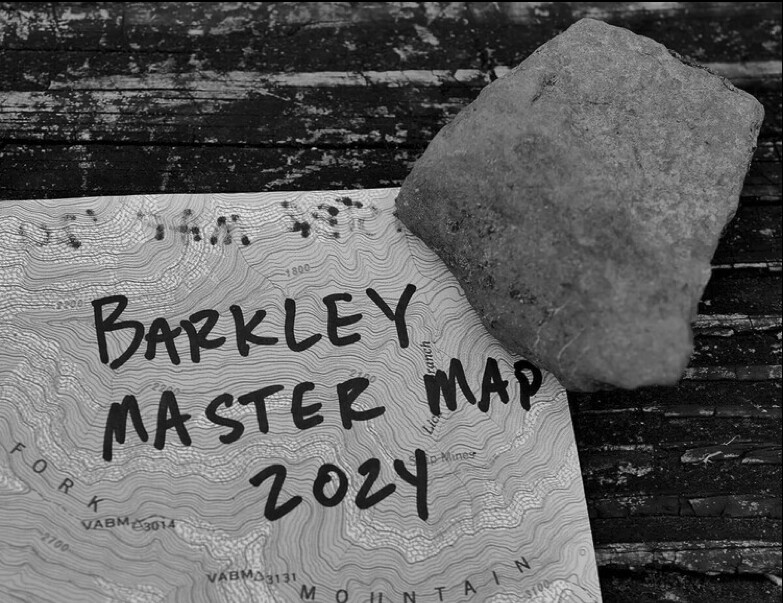
of those ran their first ultra in the past five years.
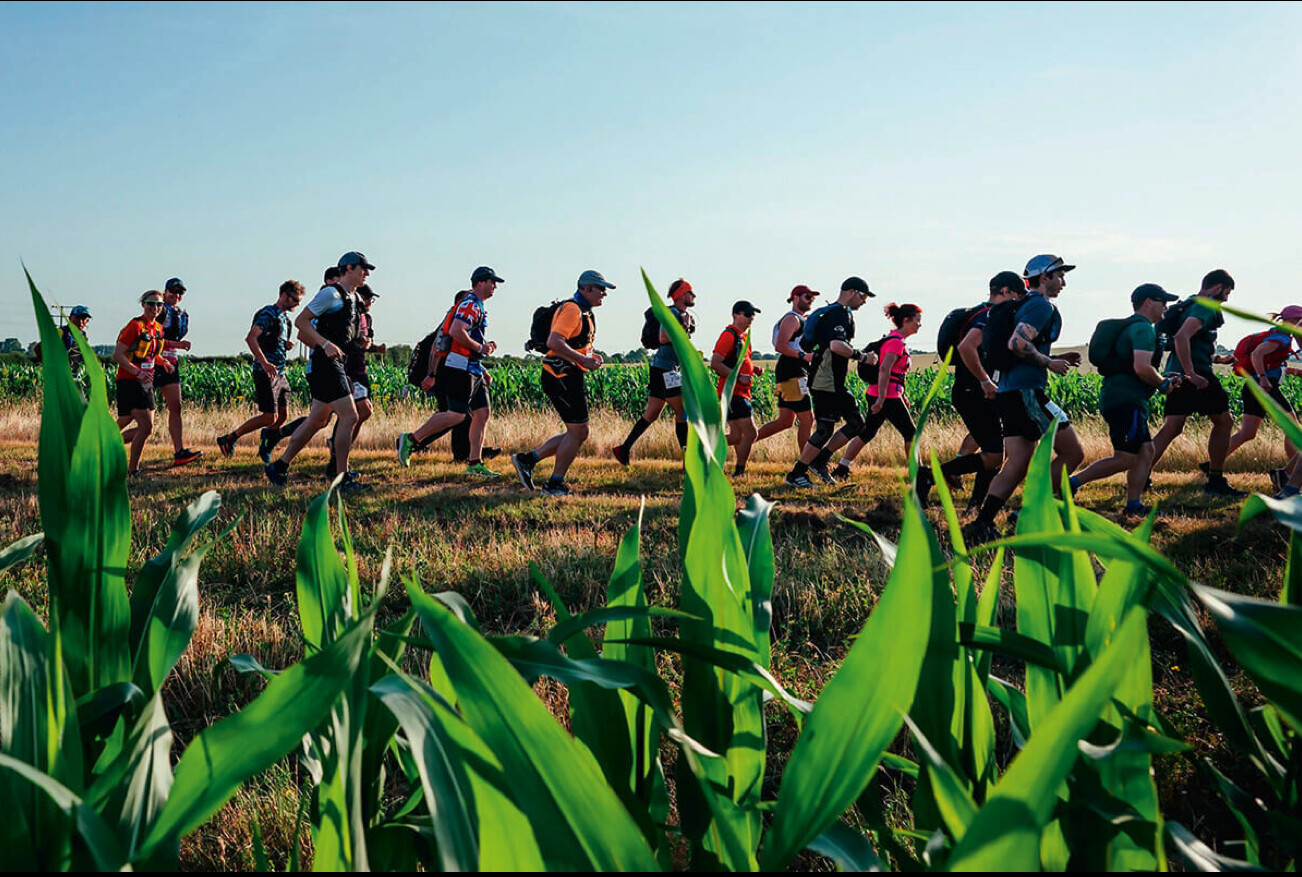
33%
said that they’re planning to run or considering running an ultra in the next two years.
‘It definitely feels more people are running trail and ultra, certainly post-Covid. The scene is really exciting with more races (and more accessible races), more brands, more sport-specific media, more younger, faster runners and more women – but they’re still a minority. Black Trail Runners and others are doing great work to make the scene more diverse. It’d be great to see more diversity, more accessibility and gender equality.’
Damian Hall, author and record-breaking ultrarunner236%
The year-on-year increase in internet searches for the Barkley Marathons from August 2023.
61%
of those surveyed by RW are interested or may be interested in following the big ultra races, such as the Barkley Marathons, Spine and Ultra-Trail du Mont-Blanc. 34%
This year’s increase in registrations for the Ultra-Trail du Mont-Blanc World Series Finals, compared with 2023. Demand is two to three times higher than max capacity.
43
Events in UTMB World Series in 2024, in Asia, Oceania, Europe, Africa and the Americas.
$7.3 billion
The value of the global trail running shoes market in 2022, according to a report by Allied Market Research. Up from $1.38bn in 2016, according to data from Grand View Research.
$12.4 billion
Predicted value of the global trail running shoes market in 2032, according to Allied Market Research.
30%
Year-on-year increase in numbers for the Montane Spine races. ‘The Montane Spine has expanded with more races within the events and more locations. We’ve had to organise other races to keep up with demand because the Montane Spine races continue to consistently sell out. We’re seeing people looking for ultramarathons to help with their mental health.’
Phil Hayday-Brown, founder of the Montane Spine Race
63%
The year-on-year increase in participants at Black To The Trails, with a waiting list operating for 2024’s sold-out event. 58% of runners were people of colour, with 14 of the 19 UK ethnic categories represented; 70% of participants were women.‘The Black Trail Runners community continues to grow daily with thousands of followers in the UK and globally, we’re a registered community and campaigning charity with the mission to increase the inclusion, participation and representation of people of Black ethnicity in trail running. If you want to see a more ethnically diverse sector, you can join us to help us do that – you don’t need to be of Black ethnicity to support the work that we do.’
Sabrina Pace-Humphreys, ultrarunner and co-founder of Black Trail Runners
5,252%
Growth in trail races with 500 or more participants in the 10 years leading up to 2022, according to RunRepeat. 11%
The year-on-year increase in runners on Strava completing at least one ultra, according to 2024 Strava data, growing at the same rate for men and women.
10% year-on-year increase in 50Ks.16% year-on-year increase in 50-milers. 14% year-on-year increase in 100Ks.
1,676% increase in ultra participation between 1996 and 2018, according to a recent report from RunRepeat, with numbers rising from just 34,401 to 611,098.
5,590 races
on the International Trail Runners Association calendar between January and August 2024: a 458% increase from the 1,002 races planned a decade ago.
49%
of respondents to the RW survey who run on trails started trail running within the past five years.
231%
Growth in trail running worldwide in the decade leading up to 2022, according to RunRepeat research. ‘All our events have been sell-outs the last couple of years. The Tolkien Trail Race sells out 500 entries in under an hour, and we’re noticing races fill up quicker and quicker each year. Trail racing has the least barriers to compete, with less emphasis on times than road racing, which can be intimidating. There’s an element of adventure, a test of endurance and the release of being in nature that’s evidently being enjoyed across ages and genders.’
Chris Holdsworth, race director for Pennine Trailsitting the trails and embracing ultra distances that immerse us in nature, where mile splits matter far less than the experience
(10/19/24) Views: 92

